Growing up, the smell of brown sugar bubbling away in my mom's kitchen meant one thing: minatamis na saging was coming! I'd rush home from school every afternoon hoping to catch her making this sweet treat. She'd always let me help stir the pot, watching the bananas turn golden and tender in that glossy caramel syrup.
Now I make this same recipe for my own family, and it brings back all those warm childhood memories. This traditional Filipino snack is incredibly simple: just bananas, brown sugar, and a few pantry staples.
The best part? It takes only 20 minutes from start to finish, and you probably have everything you need right in your kitchen.
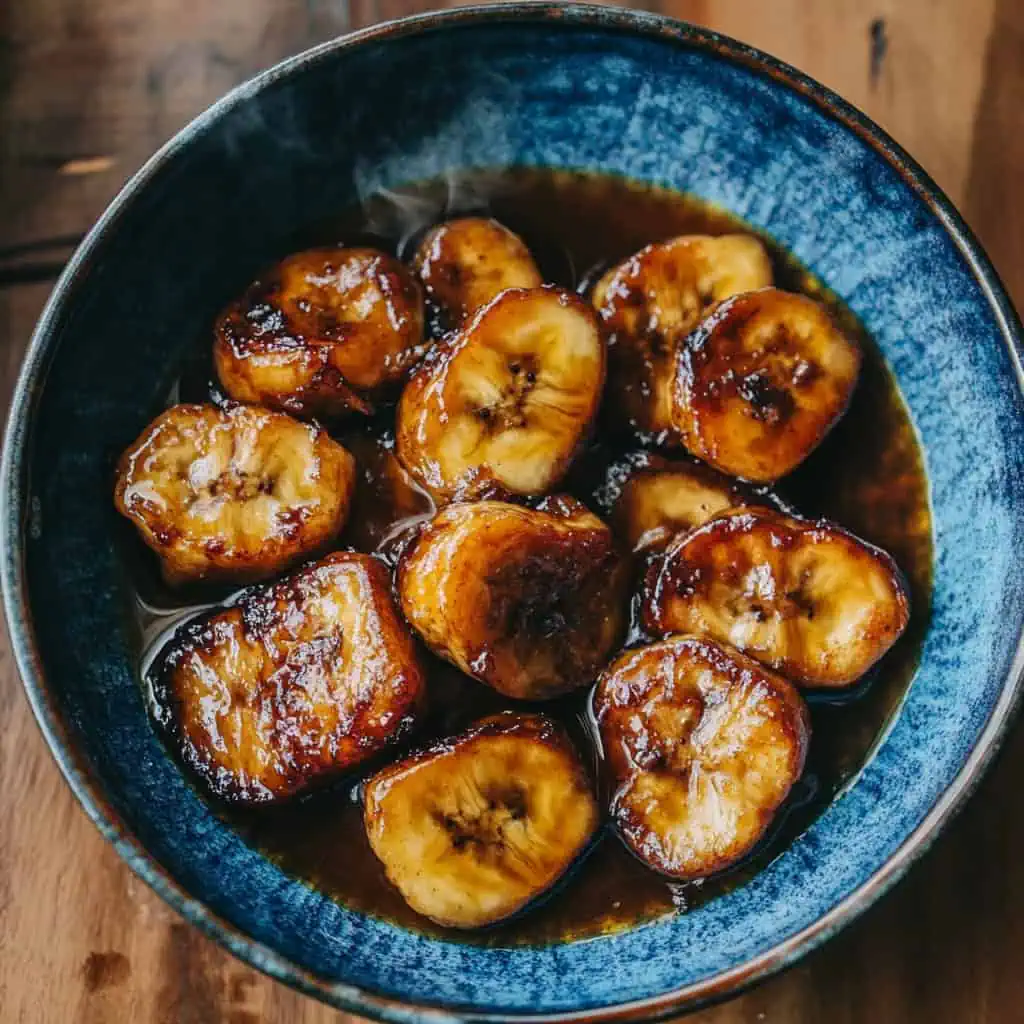
Why You'll Love This Recipe
This traditional Filipino comfort food brings back childhood memories with every spoonful. The tender bananas swimming in glossy caramel syrup create the perfect balance of sweetness and comfort. What makes this recipe special is how simple it is - you probably have all the ingredients in your kitchen right now!
The addition of calamansi juice cuts through the sweetness beautifully, preventing it from being overly cloying. It's ready in just 20 minutes and costs less than a cup of coffee to make for the whole family.
Jump to:
Ingredients
- 8-10 pieces ripe saba bananas, peeled and sliced
- 1 cup water
- ½ cup brown sugar
- ½ teaspoon vanilla essence
- Few drops calamansi or lemon juice (optional)
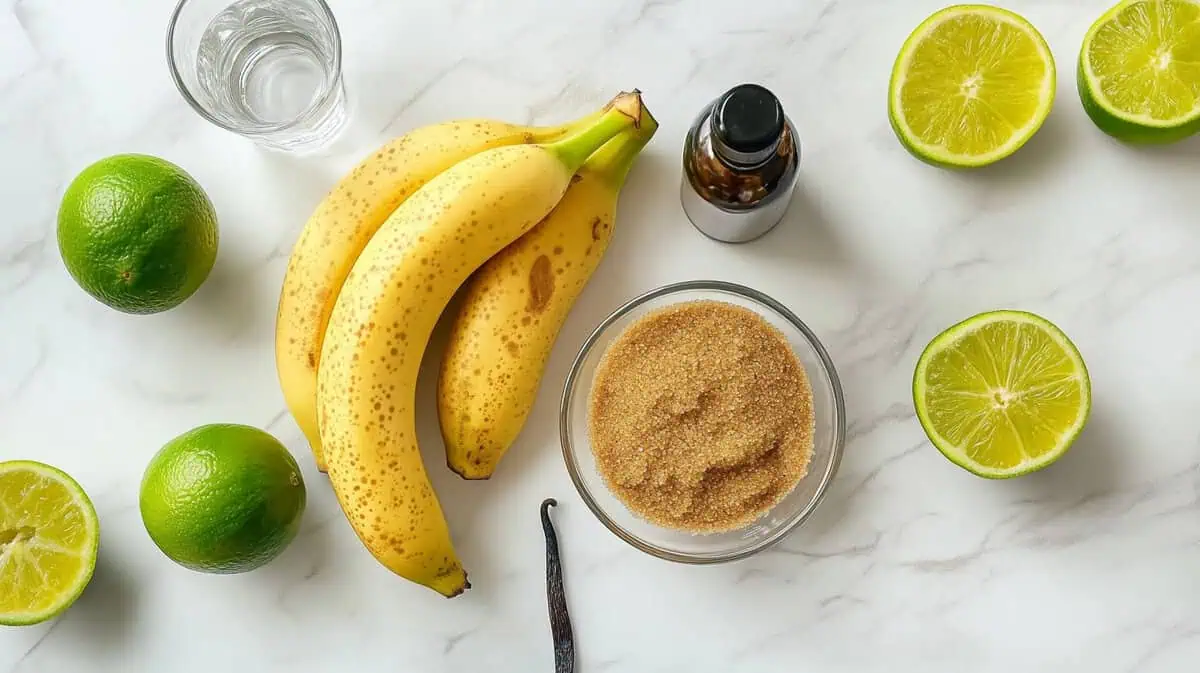
These ingredients work together beautifully to create the perfect minatamis na saging. Saba bananas are ideal because they hold their shape when cooked and have a naturally sweet, starchy texture.
Brown sugar creates a rich caramel flavor that's more complex than white sugar. The vanilla adds warmth and depth, while the calamansi juice provides just enough acidity to balance the sweetness and prevent the syrup from being too heavy.
Equipment
- Medium-sized saucepan - This allows enough space for the bananas to cook evenly without overcrowding, ensuring they develop that perfect tender texture.
- Wooden spoon - Perfect for gentle stirring without breaking the delicate banana pieces as they soften.
- Sharp knife - Essential for cleanly slicing the bananas into uniform pieces for even cooking.
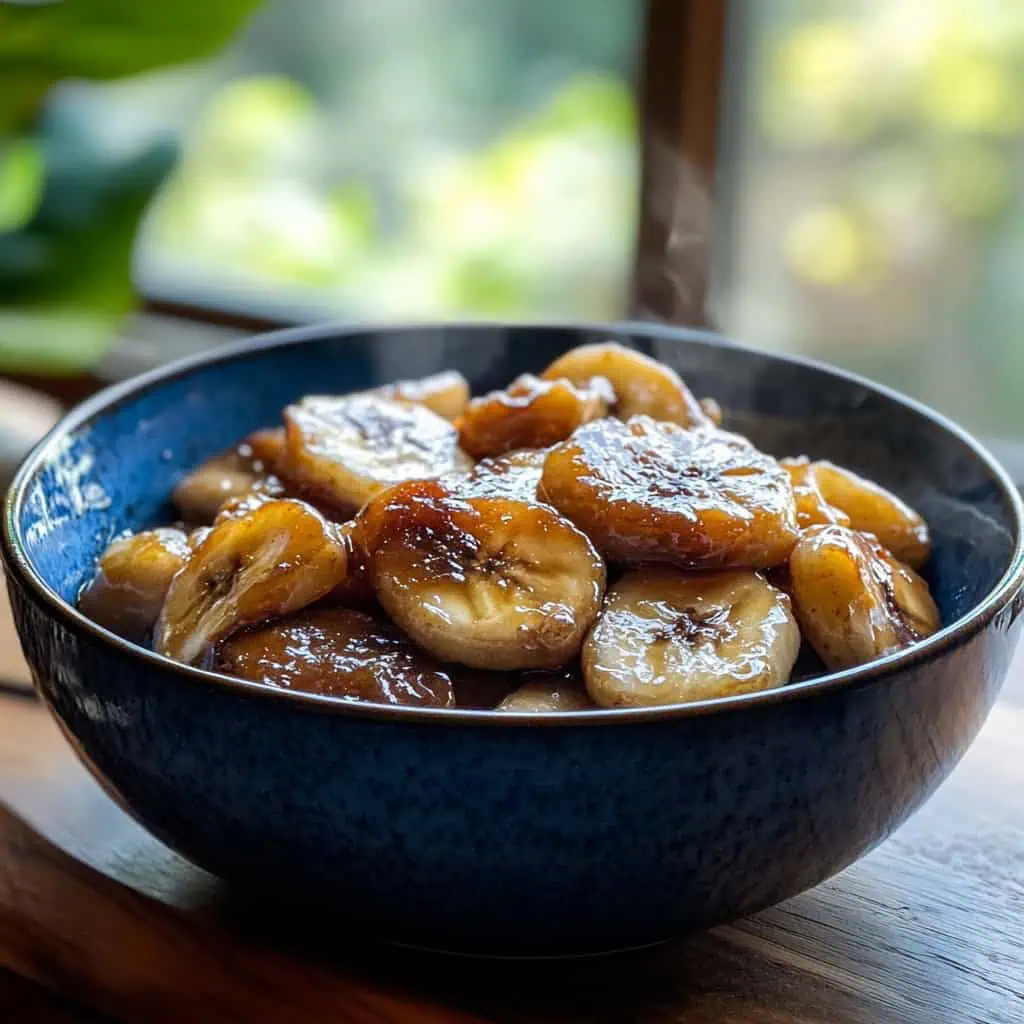
How To Make
- Pour the water into your medium saucepan and place it over medium-high heat until it reaches a rolling boil. Add the brown sugar to the boiling water and stir continuously until it completely dissolves and the mixture returns to a boil.
- Pour in the vanilla essence and give it a quick stir to distribute the flavor throughout the syrup. Gently add the sliced bananas to the bubbling syrup, being careful not to splash. Reduce the heat to medium-low and let everything simmer for about 10 minutes, stirring occasionally with your wooden spoon.
- Continue cooking until the bananas become fork-tender and the syrup thickens to a glossy consistency that coats the back of your spoon.
- Add the calamansi juice drops according to your taste preference and simmer for another 3-5 minutes to let the flavors meld together.
- Remove from heat and serve immediately while hot for the best experience.

Tips from Lola's Kitchen
- Choose saba bananas that are ripe but still firm - they should give slightly when pressed but not be mushy
- Don't rush the caramelization process; let the sugar dissolve completely before adding bananas
- Stir gently to avoid breaking the banana pieces, especially once they start getting tender
- Taste the syrup before adding calamansi - some prefer it sweeter, others like more tang
- If your syrup gets too thick, add a tablespoon of hot water and stir
- Save some syrup for drizzling over ice cream later - it keeps well in the fridge
Substitutions
- No saba bananas? Use firm Cavendish bananas or even plantains, but reduce cooking time slightly
- Brown sugar substitute: White sugar works but add a pinch of molasses for depth, or use coconut sugar
- No calamansi? Lemon juice works perfectly, or try a tiny splash of vinegar for tang
- Vanilla extract: Pure vanilla extract can replace essence - use the same amount
- Make it dairy-free: It already is! For creamier version, add coconut cream instead of evaporated milk
Troubleshooting
- Bananas falling apart? Your bananas were too ripe or you stirred too vigorously - next time use firmer fruit
- Syrup won't thicken? Keep cooking on low heat - it takes patience, or add a pinch more sugar
- Too sweet? Add more calamansi juice gradually until it balances out
- Syrup crystallized? This happens if sugar wasn't fully dissolved - add hot water and stir gently
- Bananas too firm? Cook longer at lower heat - they need more time to break down their starches
Storage & Reheating
- Refrigerator: Store covered for up to 3 days - the flavors actually improve overnight
- Freezer: Not recommended as bananas become mushy when thawed
- Reheating: Warm gently in saucepan over low heat, adding splash of water if syrup thickened too much
- Serving cold: Transform into saging con hielo by adding crushed ice and evaporated milk
- Leftover syrup: Strain and use over pancakes, ice cream, or other desserts within a week
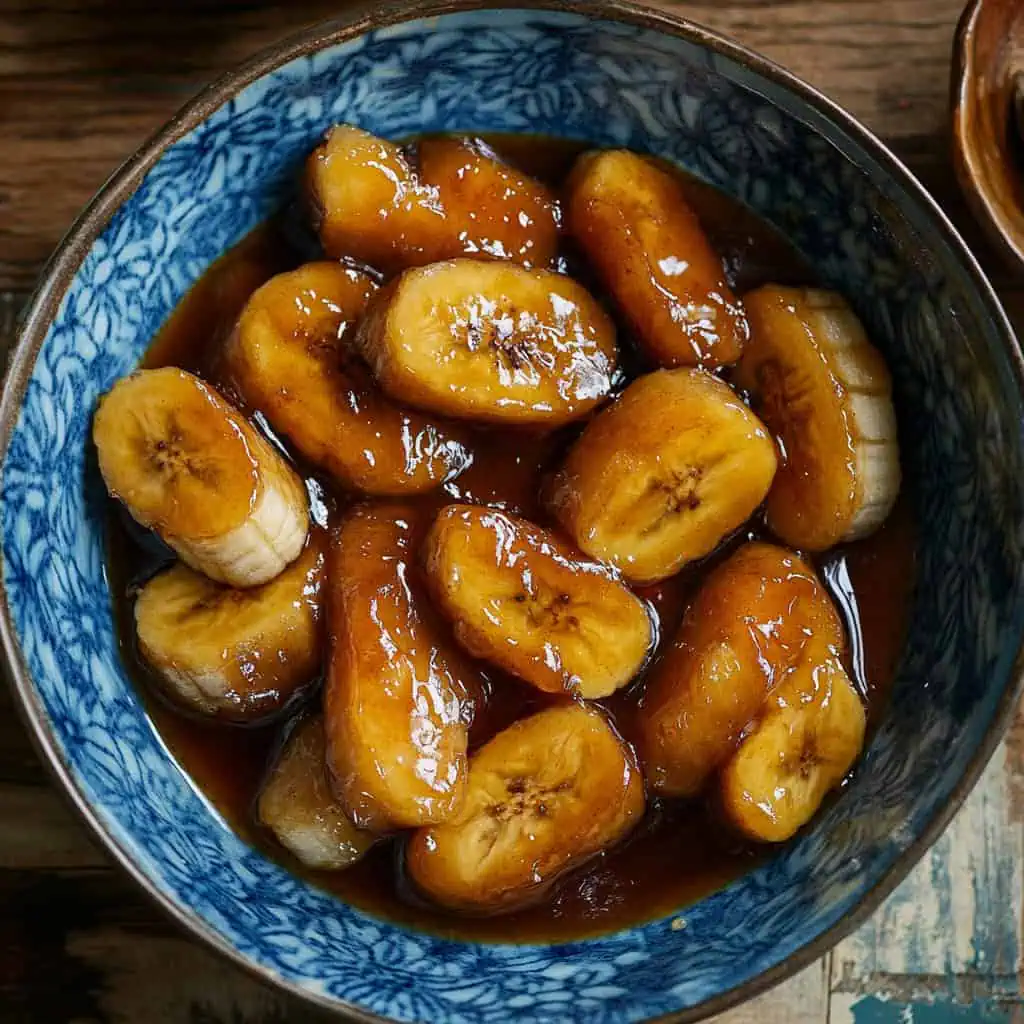
FAQ
Can I make this ahead?
Yes! It tastes even better the next day as flavors develop
What's the best banana variety?
Saba is traditional and holds shape best, but any cooking banana works
How do I know when it's done?
Bananas should be fork-tender and syrup should coat a spoon
Can kids help make this?
Absolutely. They can help measure ingredients and watch the magic happen
Is this dessert or snack?
Both! Filipinos enjoy it as merienda (afternoon snack) or after meals
Can I double the recipe?
Yes, but use a larger pan so bananas cook evenly
Why add calamansi?
It cuts the sweetness and adds complexity, totally optional though
How thick should the syrup be?
Like maple syrup consistency, it will thicken more as it cools
Related
Looking for other recipes like this? Try these:

Minatamis na Saging (Filipino Sweetened Bananas in Caramel Syrup)
Ingredients
- 8-10 pieces ripe saba bananas peeled and sliced
- 1 cup water
- ½ cup brown sugar
- ½ teaspoon vanilla essence
- Few drops calamansi or lemon juice optional
Instructions
- Pour the water into your medium saucepan and place it over medium-high heat until it reaches a rolling boil. Add the brown sugar to the boiling water and stir continuously until it completely dissolves and the mixture returns to a boil.
- Pour in the vanilla essence and give it a quick stir to distribute the flavor throughout the syrup. Gently add the sliced bananas to the bubbling syrup, being careful not to splash. Reduce the heat to medium-low and let everything simmer for about 10 minutes, stirring occasionally with your wooden spoon.
- Continue cooking until the bananas become fork-tender and the syrup thickens to a glossy consistency that coats the back of your spoon.
- Add the calamansi juice drops according to your taste preference and simmer for another 3-5 minutes to let the flavors meld together.
- Remove from heat and serve immediately while hot for the best experience.
Tips from Lola's Kitchen
- Choose saba bananas that are ripe but still firm - they should give slightly when pressed but not be mushy
- Don't rush the caramelization process; let the sugar dissolve completely before adding bananas
- Stir gently to avoid breaking the banana pieces, especially once they start getting tender
- Taste the syrup before adding calamansi - some prefer it sweeter, others like more tang
- If your syrup gets too thick, add a tablespoon of hot water and stir
- Save some syrup for drizzling over ice cream later - it keeps well in the fridge
The Story Behind Minatamis na Saging
Minatamis na saging has been warming Filipino hearts for generations, born from the resourcefulness of home cooks who knew how to transform simple ingredients into something special. This beloved dessert emerged during a time when sugar was precious and nothing went to waste - overripe bananas found new life in bubbling caramel syrup instead of being thrown away.
The recipe traveled through Filipino provinces, with each region adding its own touch. In some areas, coconut milk enriched the syrup, while others preferred the clean simplicity of brown sugar and water. The Tagalog name literally means "sweetened bananas," but the dish represents so much more than its direct translation. It embodies the Filipino concept of merienda - that sacred afternoon pause when families gather for snacks and conversation.
Saba bananas, the star of this traditional recipe, have been cultivated in the Philippines for centuries. Unlike regular bananas, saba varieties hold their shape beautifully when cooked, developing a creamy texture that absorbs the caramel syrup without falling apart. This cooking banana became the foundation for countless Filipino desserts, but minatamis na saging remains the most beloved and widespread.
During the Spanish colonial period, brown sugar production flourished in the Philippines, making this sweet treat more accessible to common households. The addition of calamansi juice - a uniquely Filipino citrus - elevated the dessert beyond simple sweetness, creating the perfect balance that defines authentic minatamis na saging today.
What makes this recipe truly special is its democratic nature. Rich or poor, every Filipino family could afford to make minatamis na saging. It required no special equipment, no exotic ingredients, just patience and love. Today, it remains unchanged - a testament to the timeless appeal of perfectly balanced flavors and the comfort of food made with care.


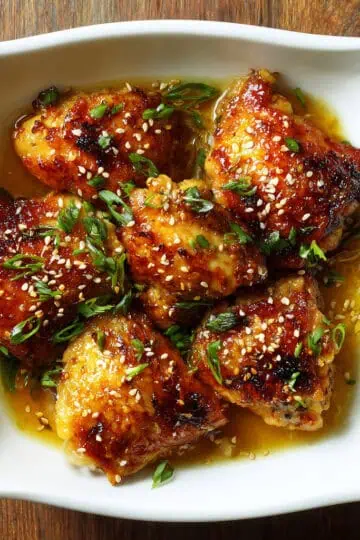







Comments
No Comments